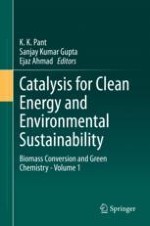2021 | OriginalPaper | Buchkapitel
Biohydrometallurgy: A Sustainable Approach for Urban Mining of Metals and Metal Refining
verfasst von : Prashant Ram Jadhao, Snigdha Mishra, Ashish Pandey, K. K. Pant, K. D. P. Nigam
Erschienen in: Catalysis for Clean Energy and Environmental Sustainability
Aktivieren Sie unsere intelligente Suche, um passende Fachinhalte oder Patente zu finden.
Wählen Sie Textabschnitte aus um mit Künstlicher Intelligenz passenden Patente zu finden. powered by
Markieren Sie Textabschnitte, um KI-gestützt weitere passende Inhalte zu finden. powered by
